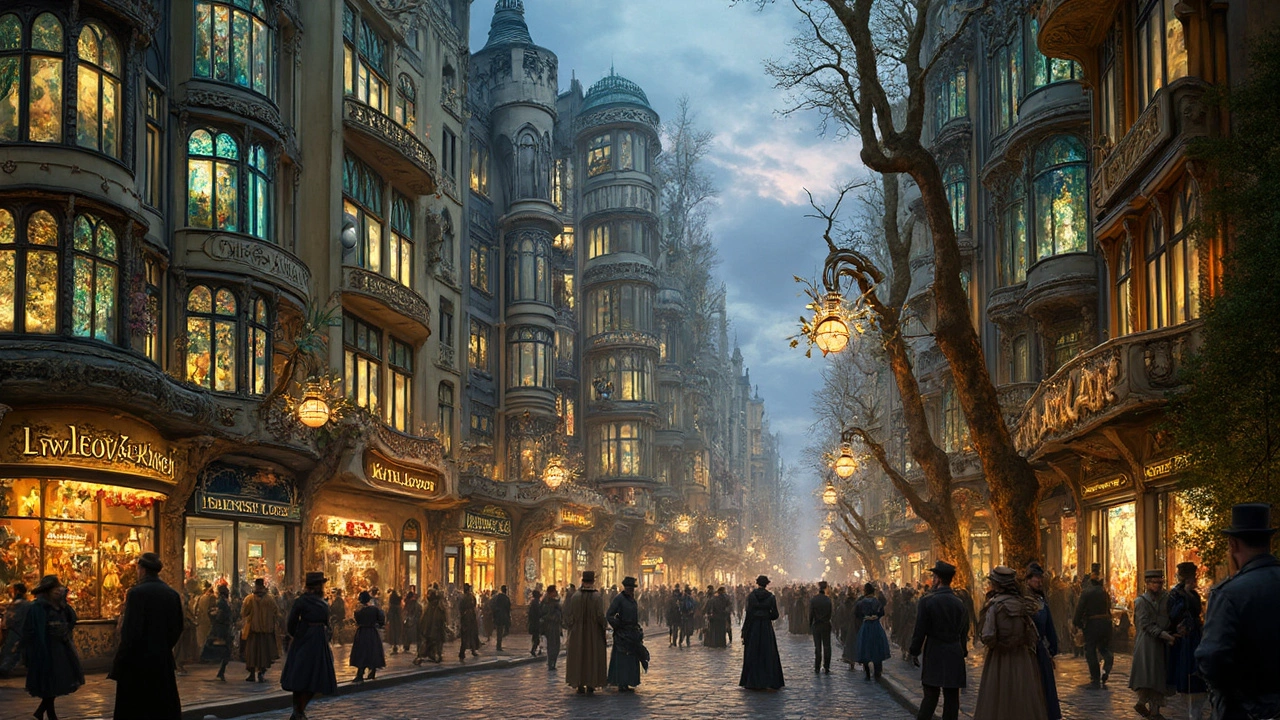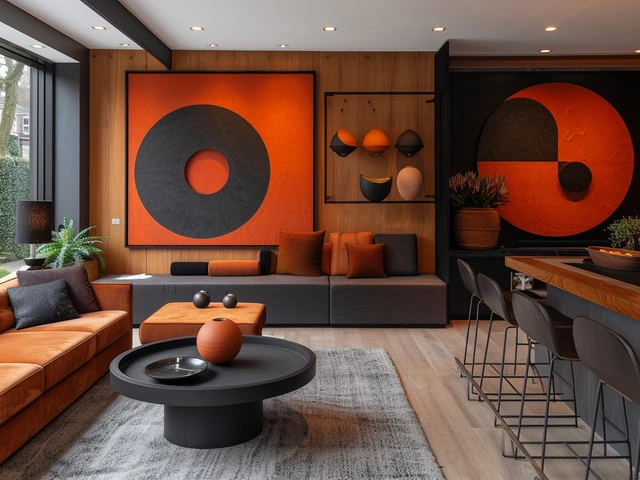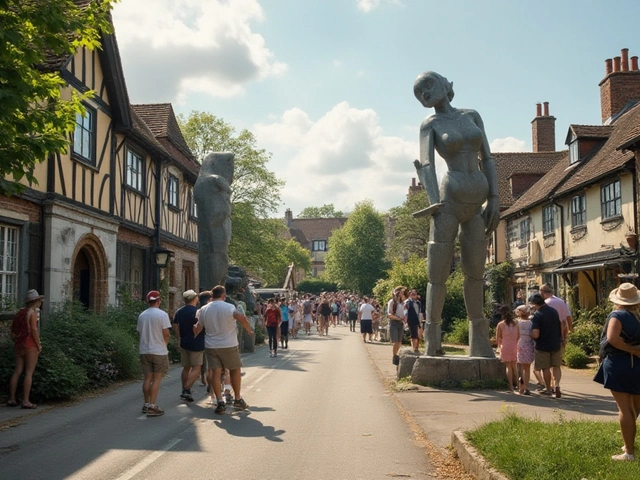Art Nouveau burst onto the scene in the late 1800s, challenging the traditional art forms of the time. It was all about breaking the mold, with its flowing lines and nature-inspired designs. Artists wanted to turn everyday objects into something beautiful and unique, which they definitely achieved. Think of it as the rebellious teenager of the art world.
This movement didn't just stick to paintings; it invaded architecture, furniture, and even jewelry. Imagine buildings that almost look like they could grow, with ironwork that twists and turns like vines. It was all about creating harmony between works of art and their surroundings. Even today, if you spot a curved, floral design on a poster or piece of furniture, you can bet it has roots in Art Nouveau.
- Origins of Art Nouveau
- Defining Features and Aesthetics
- Influential Artists and Architects
- Impact on Modern Design
- Tips for Incorporating Art Nouveau in Your Space
Origins of Art Nouveau
So, where did Art Nouveau come from? Let's jump back to the late 19th century. The Industrial Revolution was in full swing, pumping out goods like never before, but with that came a lot of cookie-cutter, mass-produced designs. Artists and designers of the time were itching for something fresh and unique. They wanted to bring beauty into everyday life, and thus, Art Nouveau was born.
The term Art Nouveau actually means "new art" in French, and it totally lived up to its name. This movement kicked off in Europe, with hotspots in Belgium, France, and the UK. It didn’t take long for the style to catch on and spread like wildfire across the continent. Weirdly enough, it didn’t quite take off in the U.S. until much later, but we'll get to that.
The Influence of Nature
One of the big inspirations behind Art Nouveau was, you guessed it, nature. Artists looked to plants, flowers, and insects for ideas. They wanted to reflect the beauty and fluidity of the natural world in their designs. This was a pretty radical shift from the rigid, historical styles they had been cutely ignoring.
Impact of the Arts and Crafts Movement
Another piece of this puzzle is the Arts and Crafts Movement, which cropped up around the same time. This movement emphasized handcrafting over mass-production, echoing many of the Art Nouveau ideals. The cool thing was how these influences mixed to create something totally new—a style that merged the delicacy of handcrafted items with modern technologies.
Art Nouveau managed to leave a mark on almost everything it touched. From architecture to graphic design, you can still spot its influence today. It was a short-lived movement, fizzing out by the early 20th century, but what a glorious burst of creativity it was!
Defining Features and Aesthetics
When we talk about Art Nouveau, the first thing that comes to mind is its love for nature. This movement drew inspiration from the curves of plants, flowers, and even insects. Everything had to flow, twist, and turn, kind of like a piece of elegant ivy climbing up a stone wall.
Flowing Lines and Organic Shapes
Flowing, sinuous lines were a hallmark. Imagine a lot of curves, almost like you're drawing nothing but very loose S's and C's connected together. This style embraced asymmetry too, giving each piece a unique, less predictable look.
Nature and Symbolism
Blending nature with art, this style often integrated natural elements like plants, flowers, and animals. Peacocks, dragonflies, and lilies made regular appearances as symbolic motifs. These aren't just random animals and plants—each one had meanings which resonated with the audience of the time.
Material and Color
Art Nouveau didn't shy away from experimenting with materials either. Stained glass, ironwork, and ceramics became favorite mediums. The use of light shining through colored glass created dreamy effects. The colors were usually muted and pastel-like, nothing too loud or garish.
The Whiplash Curve
One of the most distinctive elements is the whiplash curve. It’s a bold, dynamic form that's impossible to miss. This curve shows up a lot, especially in illustrations, posters, and architecture.
Graphic Arts and Typography
Graphic design also got a makeover with highly stylized typography and bold poster designs. Artists like Alphonse Mucha led the way with intricate lithographs that featured ethereal figures surrounded by floral motifs and stylized lettering.
So, when you come across an ornate gateway or a beautifully designed stained glass window with floral patterns, you're experiencing the enduring charm of Art Nouveau. It's like stepping into a time when everything was a work of art, even the everyday objects were meant to be admired.
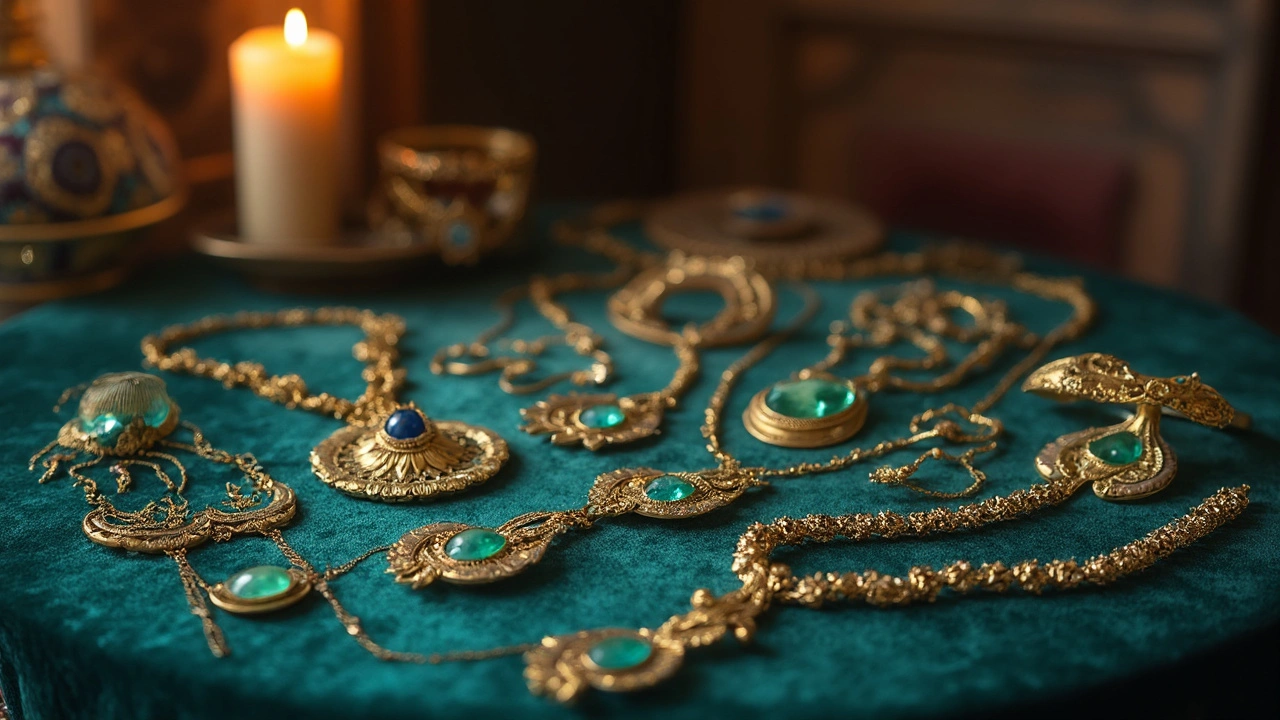
Influential Artists and Architects
Art Nouveau wouldn't be the same without its key players—those artists and architects who pushed the boundaries. These visionaries weren't afraid to break away from tradition, and their work still inspires us today.
Antoni Gaudí
If you've ever seen pictures of Barcelona's famous Sagrada Familia, you've seen the magic of Antoni Gaudí. This guy took architectural design to a whole new level. With his organic shapes and vibrant ceramics, he blurred the line between natural and man-made. Gaudí's work screams Art Nouveau with its blend of Gothic and natural forms, making buildings look like they're almost alive.
Gustav Klimt
Gustav Klimt is a name that often pops up when talking about Art Nouveau. His pieces, like "The Kiss," are famous for their decorative style and use of gold. Klimt was all about intricate patterns and swirling designs that embody the essence of Art Nouveau. Every stroke contributed to his quest for beauty and sensuality.
Hector Guimard
Anyone who's ever taken a trip to Paris might've noticed the Art Nouveau metro entrances designed by Hector Guimard. These iconic designs feature elegant, fluid forms that have become some of the most recognizable elements of Art Nouveau architecture. His work emphasized the seamless integration of structure and decor, mirroring nature's curves.
Alphonse Mucha
Alphonse Mucha was a major influence in the world of graphic design. His posters, particularly the ones featuring actress Sarah Bernhardt, are the epitome of Art Nouveau style—full of flowing lines, natural motifs, and soft colors. Mucha's art wasn't just about advertisement; it was about turning every piece into a masterpiece.
These artists and architects didn't just create beautiful works; they challenged the status quo, paving the way for future designers. Their bold use of materials and nature-driven designs still resonate, inspiring countless modern creations. So next time you admire a piece of Art Nouveau, remember the incredible talent and daring spirit behind it.
Impact on Modern Design
When we talk about the influence of Art Nouveau on modern design, it's like tracing the roots of a family tree. This art movement has left its indelible mark on our world, shaping how we see everyday objects and spaces. You might not even realize it, but elements of Art Nouveau might be present in your living room or favorite café.
One of the big impacts of Art Nouveau is its emphasis on natural forms. You know those sleek, curved lines that seem to flow effortlessly? That's an Art Nouveau signature. These design elements can be spotted in some of today's modern architecture where buildings boast curvy exteriors and intricate ironwork.
Art Nouveau in Interior Design
In interior design, this style plays out through things like stained glass windows, elegant staircases, and ornate lighting fixtures. Tiffany lamps are a great example of Art Nouveau lighting that managed to stand the test of time. These pieces can turn any room into a mini art gallery.
Graphics and Digital Design
Even in graphic design, the legacy of Art Nouveau is alive and well. A lot of contemporary designs, especially posters and branding, use those bold, organic shapes and flowing typography that pay homage to this movement. Just take a look at some high-end fashion brands, and you'll see how they're tapping into this timeless aesthetic.
There's also an exciting trend of blending Art Nouveau with other styles for a fresh take—known as 'New Nouveau'. It's a modern revamp that keeps the essence but gives it a twist.
Art Nouveau's impact isn't just limited to what you see aesthetically. It's about the mindset. The idea that design should be accessible and woven into life as art continues to inspire creators everywhere.
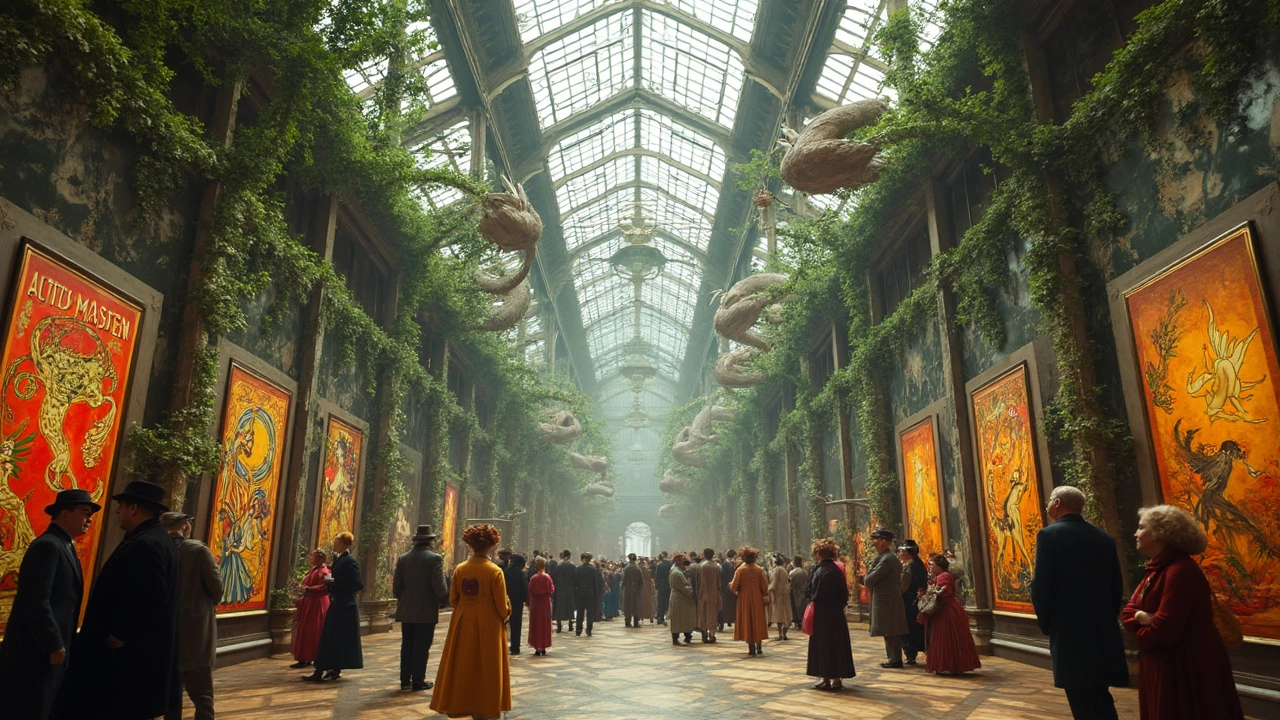
Tips for Incorporating Art Nouveau in Your Space
So, you're thinking of jazzing up your space with some Art Nouveau vibes? Awesome choice! This style is all about fluidity, elegance, and nature-inspired forms. Here are some practical ways to sprinkle that magic into your home.
1. Pick the Right Colors
Art Nouveau favored nature's palette—think earthy tones, muted greens, and warm browns. These colors ground the flowing designs and bring that seamless interior you're dreaming of.
2. Invest in Statement Furniture
Furniture with curvy lines and organic shapes screams Art Nouveau. A chair with whiplash curves or a cabinet carved with floral motifs could be the centerpiece of any room.
3. Go Big on Patterns
If you're a wallpaper lover, look for designs with waves, floral patterns, or peacock feathers. These patterns can transform a plain room into an Art Nouveau masterpiece.
4. Accessorize with Style
- Add stained glass lamps or vases with intricate designs.
- Look for detailed picture frames or mirrors that capture the movement and detail typical of Art Nouveau.
- Jewelry trays or art pieces in this style can make beautiful accents.
5. Art Selection
Art prints or paintings from famous Art Nouveau artists like Gustav Klimt or Alphonse Mucha can serve as focal points in your space. They combine bold lines with soft, muted colors—perfect for the aesthetic you're aiming for.
| Element | Tip |
|---|---|
| Colors | Earthy and natural |
| Furniture | Organic and flowing |
| Patterns | Floral and curvy |
Remember, the key here is to embrace elegance and flow without overwhelming your space. A touch here, a detail there, and soon you'll have your very own Art Nouveau haven.

